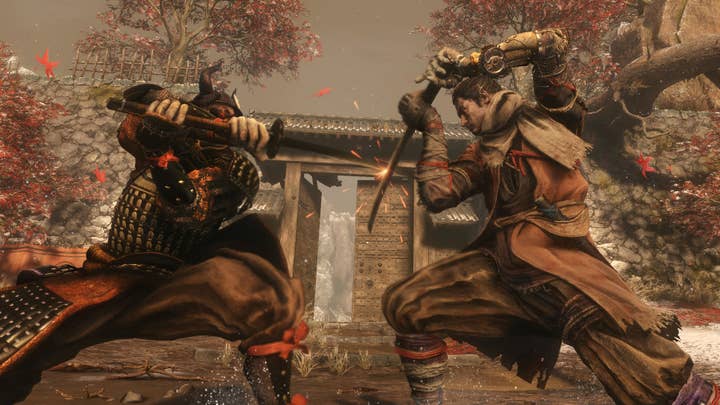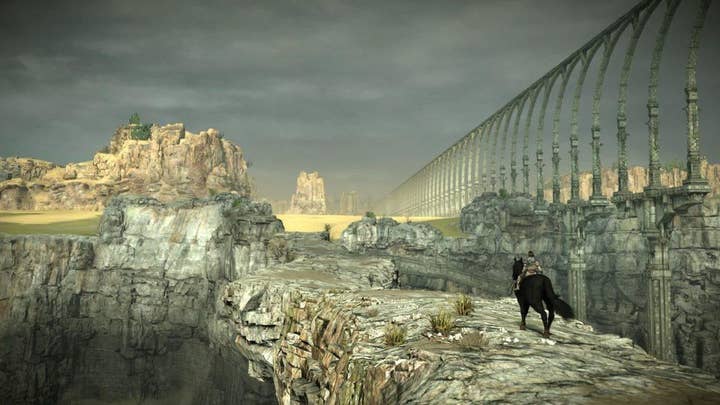Miyazaki vs Ueda: The path to compelling fantasy
Renowned Japanese developers discussed their differences at Reboot Develop, including opposing philosophies on animation and setting
Last week's Reboot Develop conference kicked off with a rare keynote from not one but two veteran Japanese developers.
The session saw From Software's Hidetaka Miyazaki and GenDesign's Fumito Ueda sharing insight into their respective design processes on games past and present. Miyazaki and his team are best known for Dark Souls, Bloodborne and the recently released Sekiro: Shadows Die Twice, while Ueda has garnered acclaim for Ico, Shadow of the Colossus and The Last Guardian.
Throughout the keynote, the pair discussed various aspects of game design and it was interesting to learn how the two men differed in their approach. For example, when it comes to animation, Ueda insisted it, "has to be about life."
"It needs to play well, I'm willing to sacrifice the feeling of reality in order to achieve that stronger, tighter gameplay"
Hidetaka Miyazaki, From Software
"There is a sort of naturalness or beauty to life," he told attendees via a translator. "Whenever animating multiple frames together, I first try to create that feeling, and then in each of those animation frames painstakingly look over and over again and try to correct those things that occur when you generate a lot of animation. It's very much like a craftsman that's constantly going over the same art over and over again to try and find that perfection."
Miyazaki also championed the importance of animation, observing that From Software has focused on hiring dedicated animators since working on Demon's Souls -- prior to this, the character modellers did a lot of animation. This shift in strategy has actually, "birthed a lot of the From Software gameplay people know today," but Miyazaki said he has a "different philosophy" to Ueda.
"[It's] not a focus on reality, but more a focus on the game itself," he says. "It needs to play well, feel good as a game, and I'm willing to sacrifice the feeling of reality in order to achieve that stronger, tighter gameplay. From my perspective, being able to do attacks or defence, those sort of animations need to feel really tight."

Returning to Ueda, the conversation shifted to non-player characters. Ueda noted that NPCs with natural animations make it easier for players to forge a connection with them -- "whether it's your horse or a young princess who needs saving." This, he said, is, "another reason why a lot of my games are able to... create emotion."
"The second you tie [a game world] to reality too much, then there's a bunch of rule-sets you have to be wary off"
Fumito Ueda, GenDesign
"It's not just that," Ueda continued. "As a designer you really have to worry about the world and how the character interacts with the world. All of that can also help generate what is a natural flow between the main character and the NPC. It's all one big part of the major puzzle we work on."
World design is another area where Miyazaki and Ueda's approaches differ slightly. While From Software's latest title Sekiro used a Japanese-inspired setting, Ueda has always given his games a more Western, medieval look. The Ico developer was asked whether he ever thought about modelling a game world on his homeland.
"Yes, I have considered that in the past," Ueda admitted. "Obviously as a Japanese man, that would be near and dear to my heart. But the reality is, I didn't know if it would be fully understood or if people would really embrace it if I made that sort of game.
"Additionally, when I create and fashion game worlds, I want to have the freedom to make anything. The second you tie it to reality too much, then there's a bunch of rule-sets you have to be wary off, and it takes away a lot of the fantasy or creativity as a game designer. So from my perspective, I want to have as much freedom as possible and really craft my own game worlds."

Miyazaki, meanwhile, accepts those limitations if it enables him to build a world with familiar touchpoints that draw users into the game. He notes that most of his games "have a lot of connections to the real world" -- with the obvious exception being Sekiro.
"But even so, it's not the real Japan," he observed. "Contrary to popular belief, there are not demons running through Japan. The point is, I'm able to have these sort of connections but that does come with limitations. You have to use them as hints or as pole markets for the overall content, the setting and so on and find that mix, which I'm very comfortable."
When asked if he's pleased with how the world design for Sekiro turned out, Miyazaki said it was enjoyable building something that wasn't so similar to the, "traditional medieval sort of game world I've done in the past."
"There's a different sort of beauty, a different sort of strength and trueness to it, and as a creator being able to dial into that, to those feelings, and representing the game was a lot of fun and felt very different from my previous works," he said.
"That being said, much like what Ueda-san said, there was fear about whether a game based on a Japanese aesthetic was really something that gamers wanted, something that people embraced and got excited about. I think the end results are out -- it worked and people did like the game -- but even now, I'm still concerned whether people really are enjoying that game world because it's so different to what we've done in the past."
GamesIndustry.biz is a media partner for Reboot Develop and attended the conference with the assistance of the organisers.

